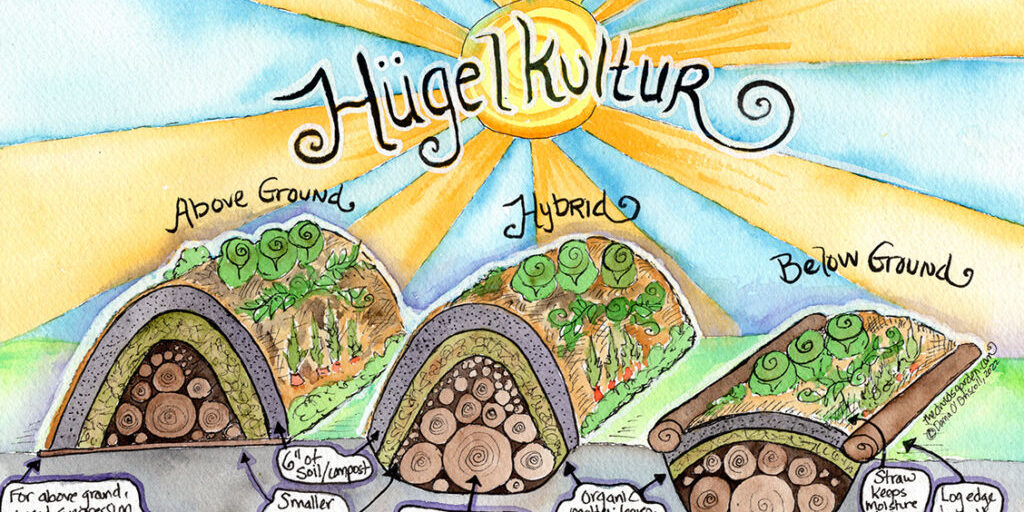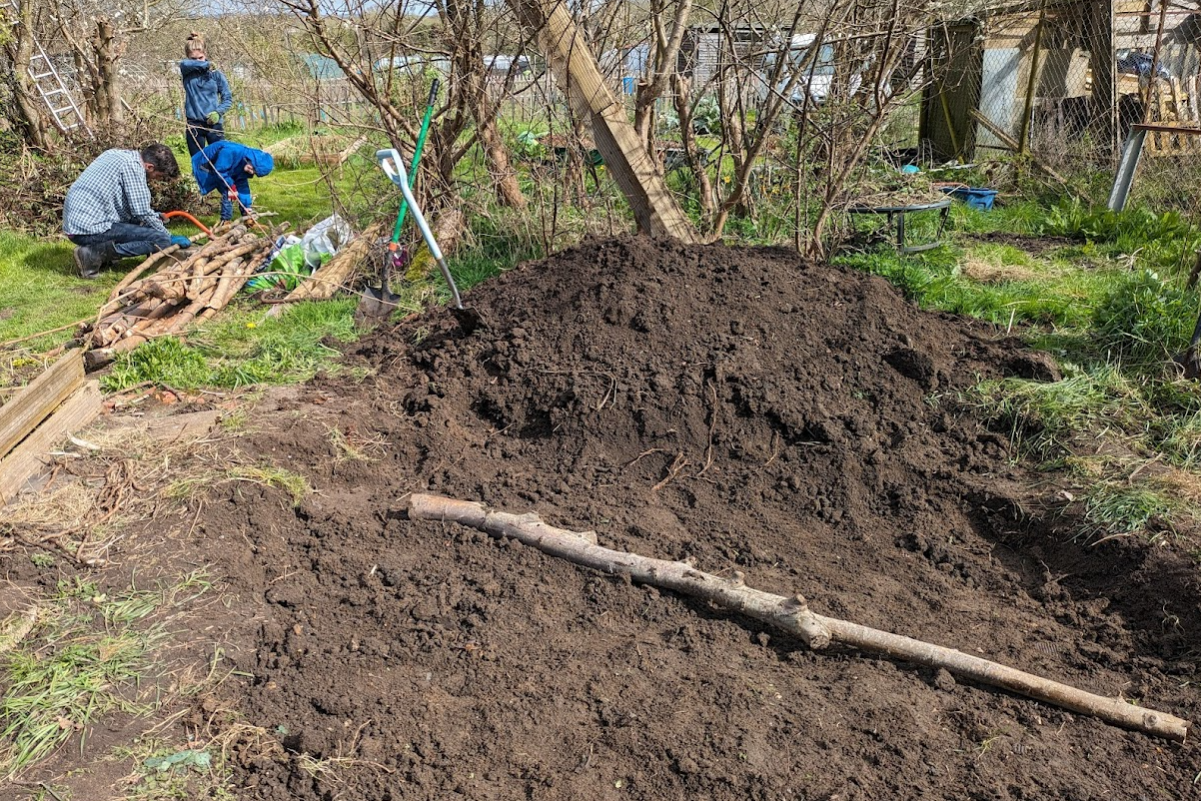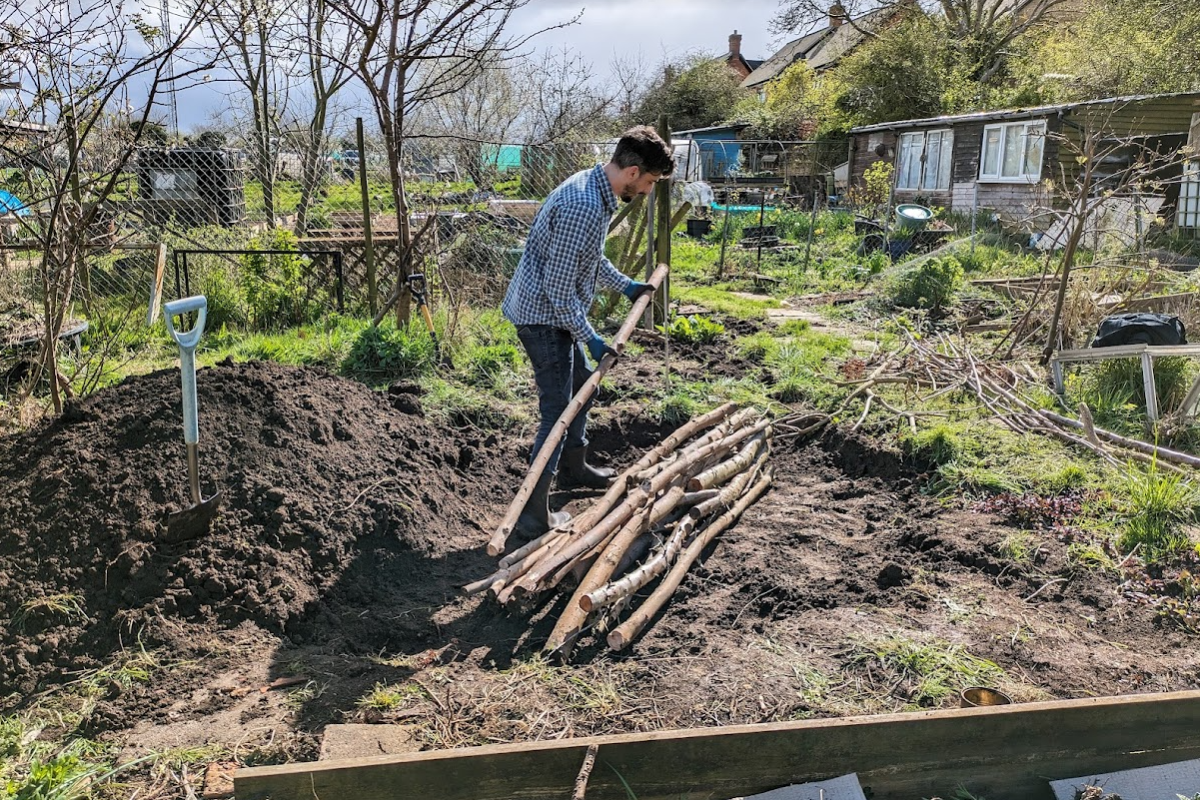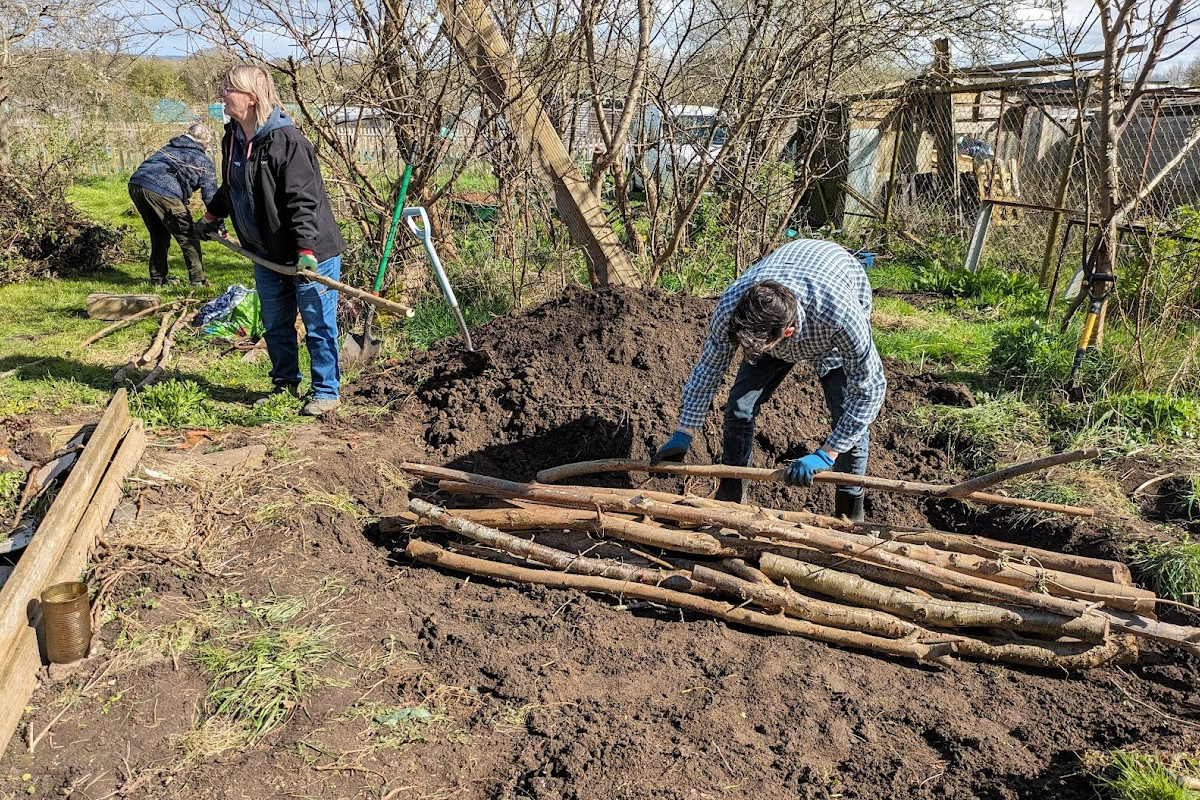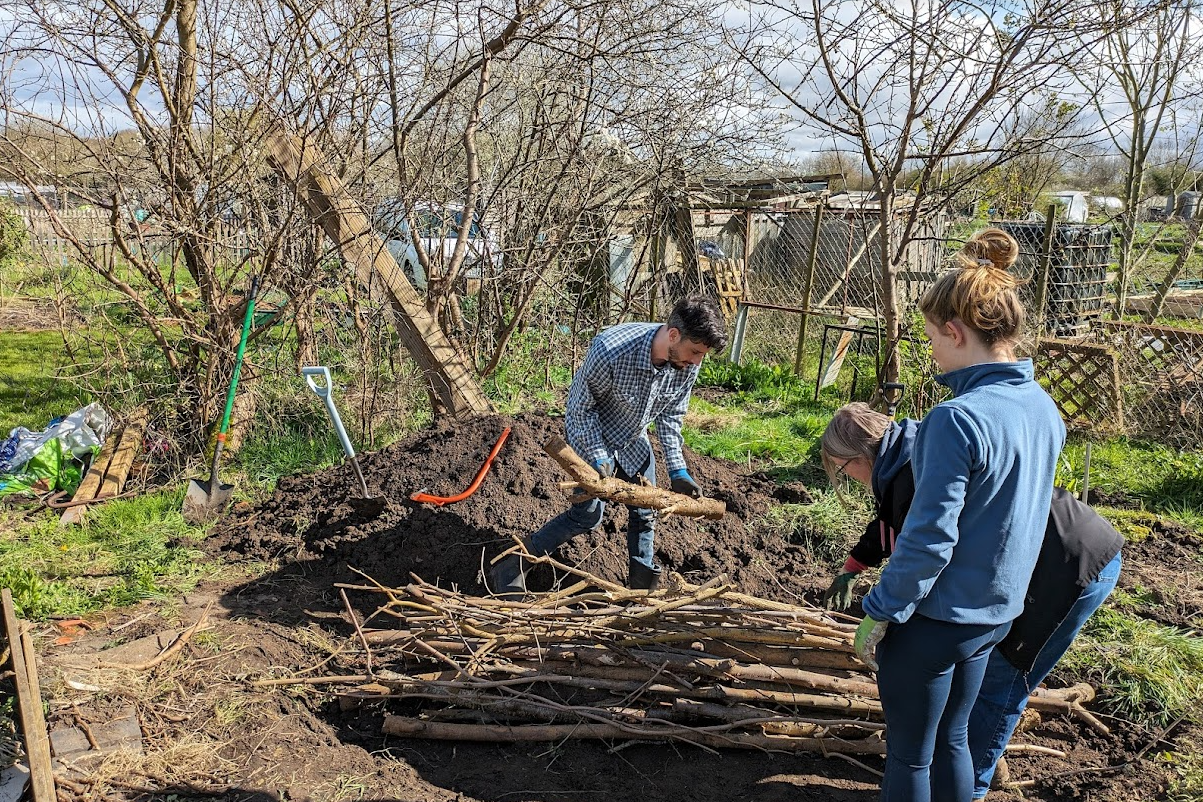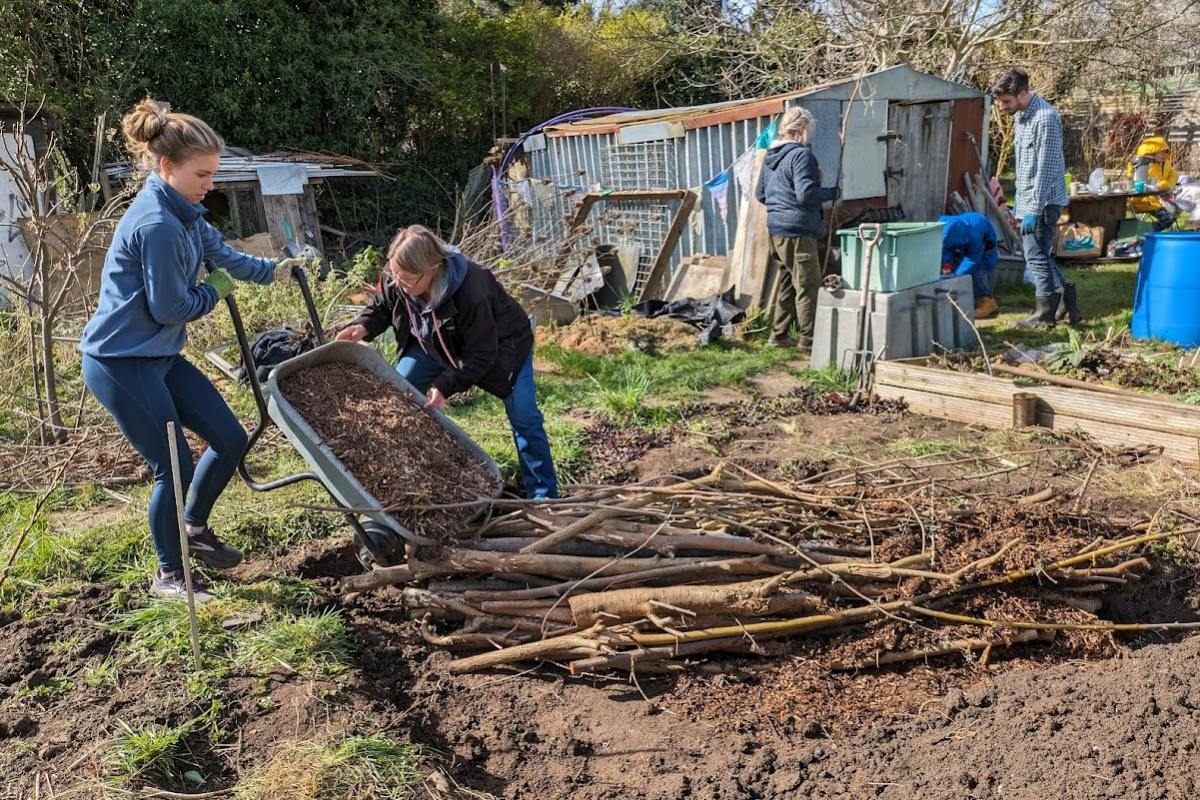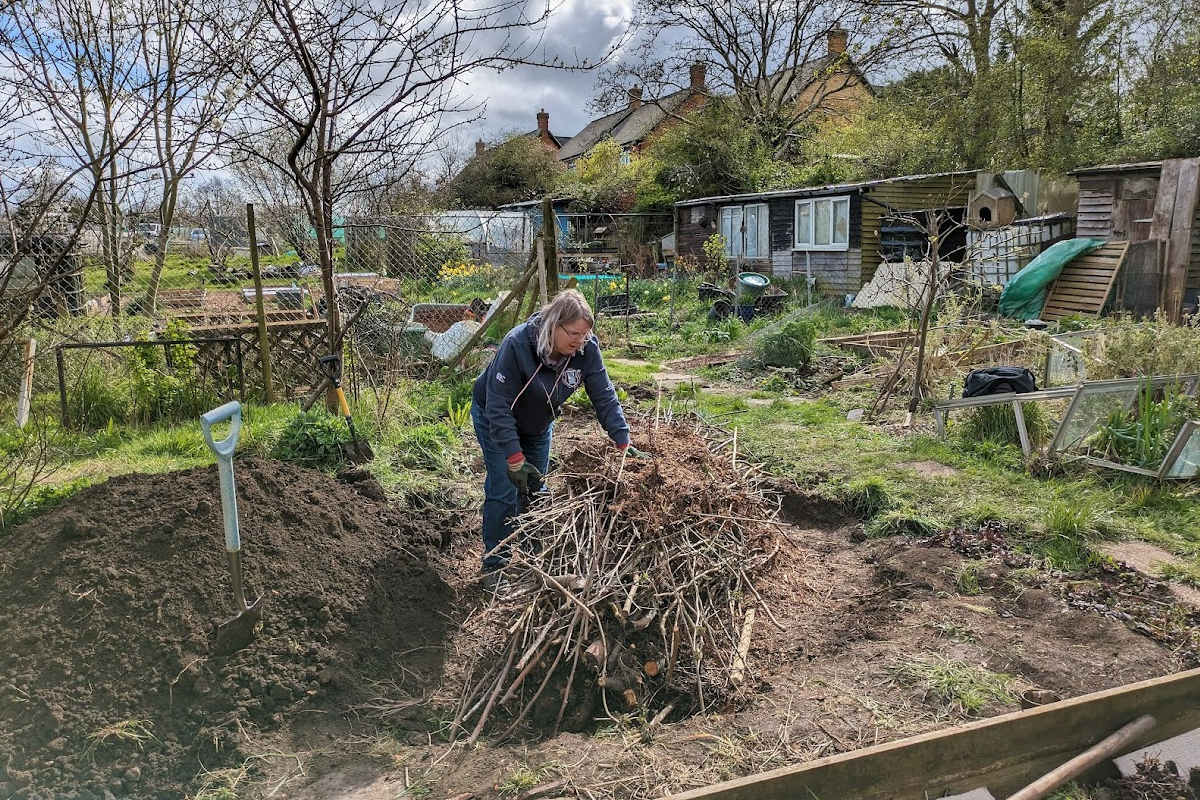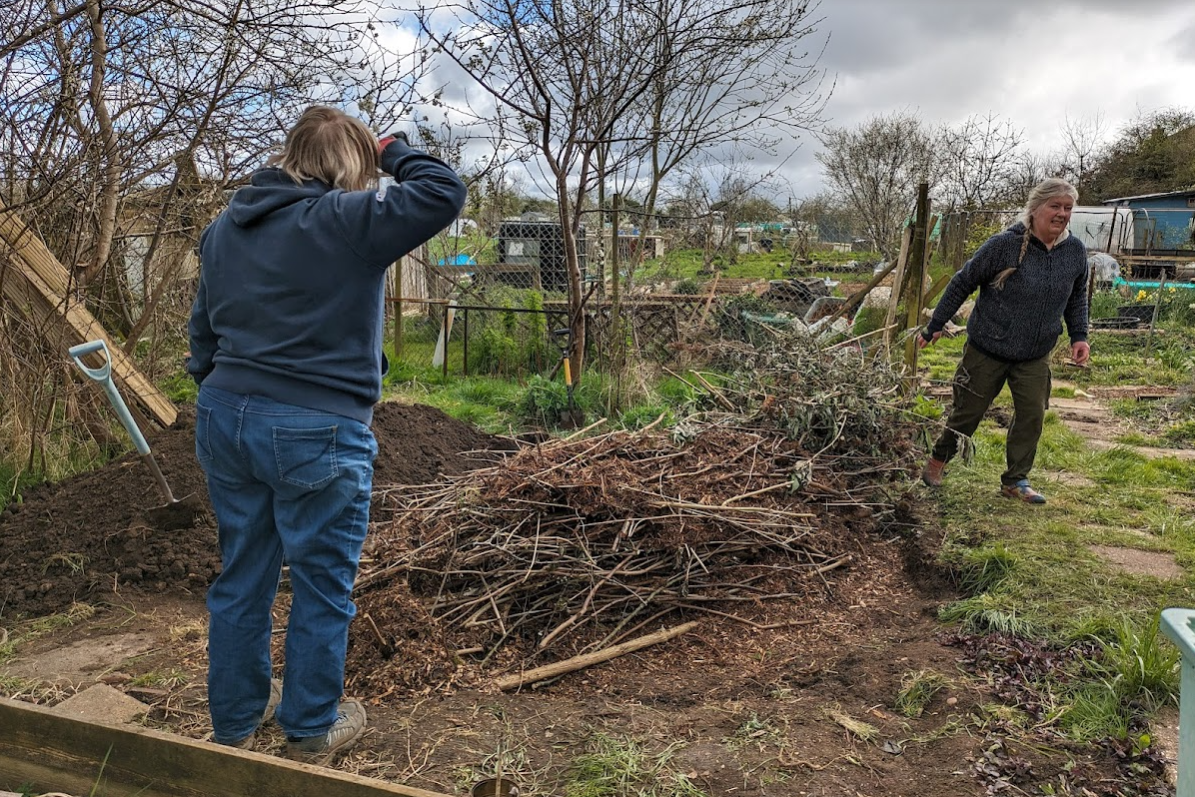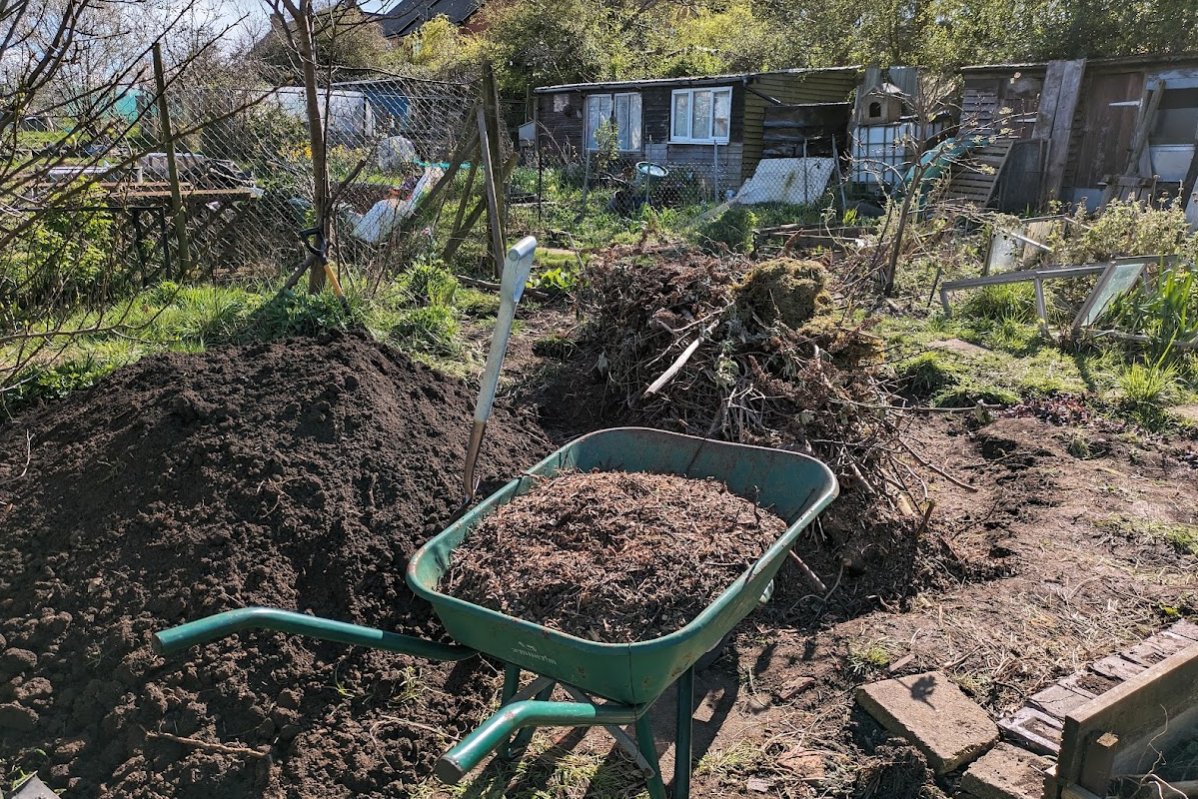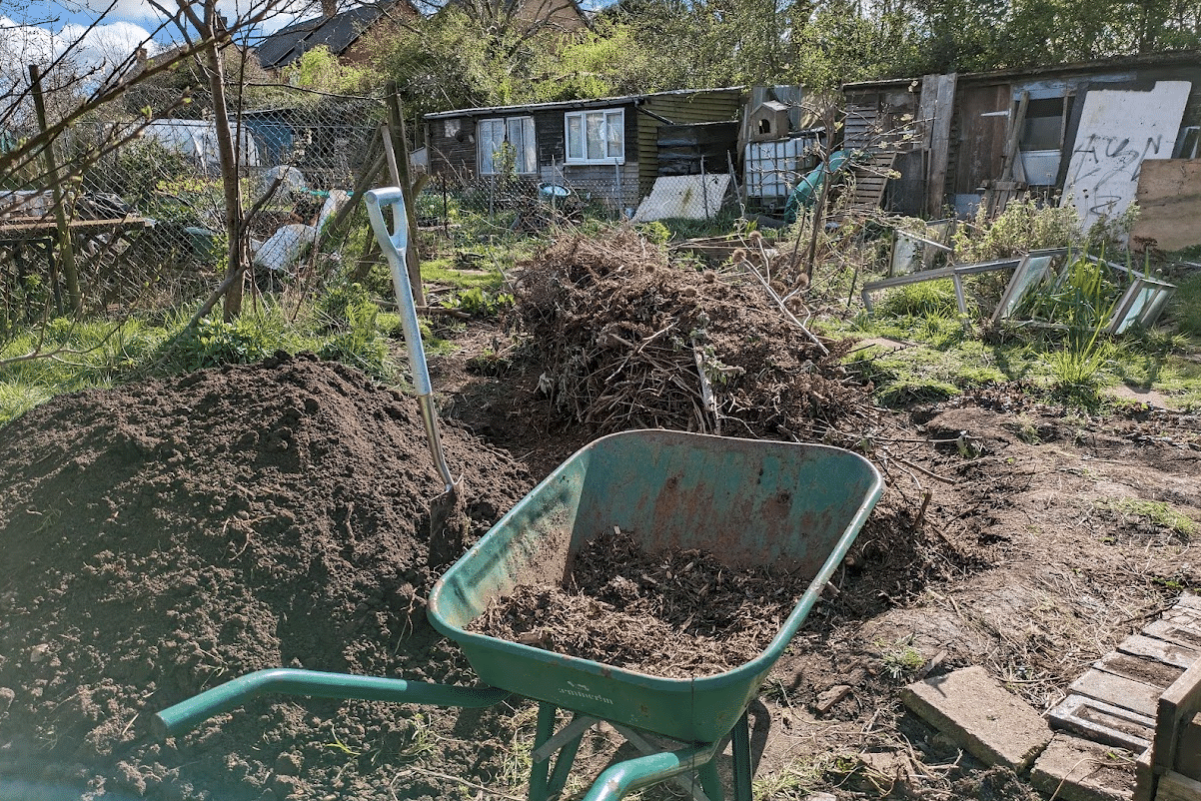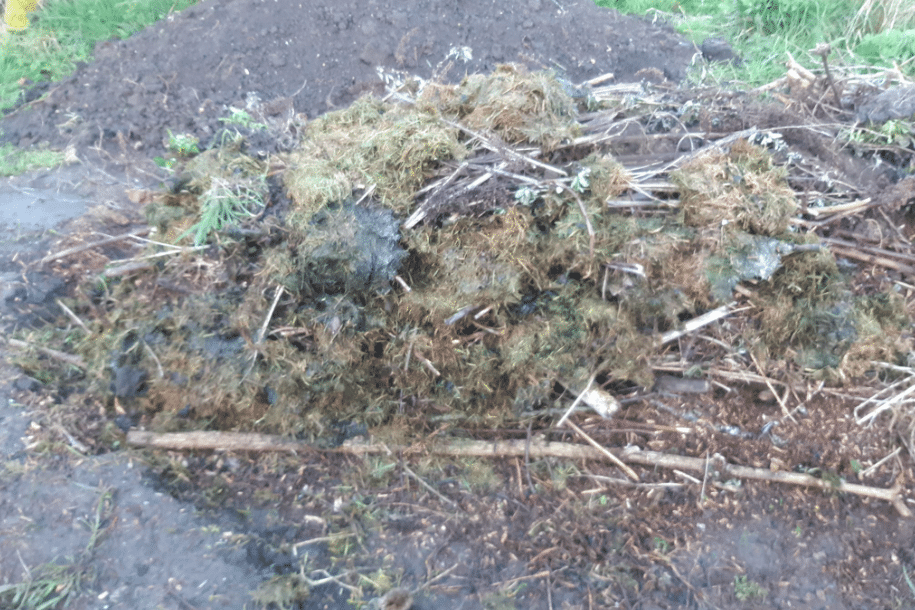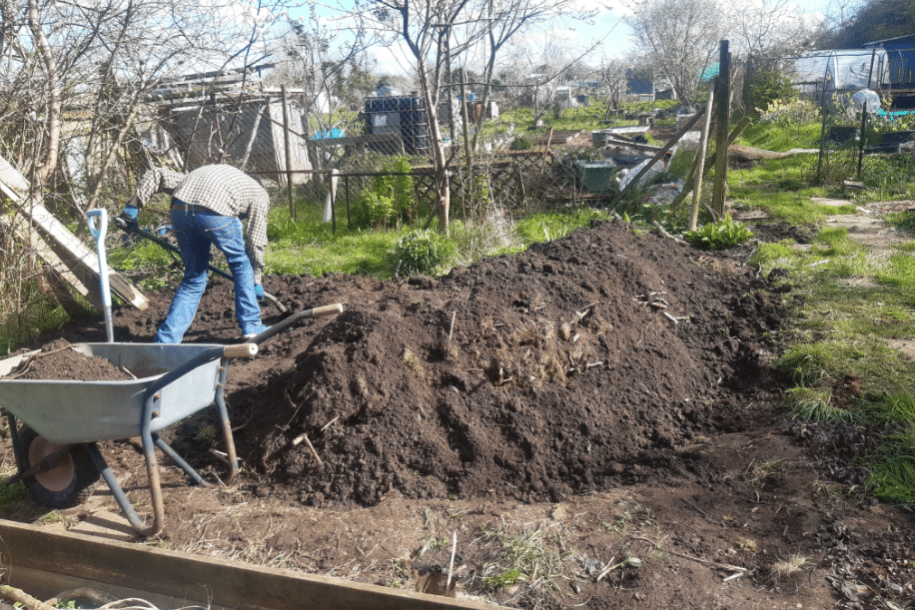Hugelkultur, a German word meaning “mound culture” or “hill culture,” is a sustainable gardening method that utilises decomposing wood debris and other compostable biomass to create raised garden beds.
This technique mimics natural forest processes, enriching soil and promoting robust plant growth and is especially beneficial for gardeners looking to reduce waste, conserve water, and improve soil health.
Here’s a step-by-step guide to how we created our own Hügelkultur bed at Ruth’s allotment for a Planting Up field day event…
Step 1: Choose the Right Location
Select a sunny spot in your garden for your Hügelkultur bed. Ensure the area has good drainage and enough space to accommodate the size of the bed you plan to create.
Our desired location was a sunny spot at the back of on Ruth’s allotment in Wolverton.
As you can see from the pictures, we weeded the bed and salvaged any plants we wanted to retain first. After that we dug a trench to fit the largest wooden branches.
Step 2: Gather Materials
The primary components of a Hügelkultur bed are:
Wood Logs and Branches: Use rotting logs, branches, and other woody debris. Avoid wood from trees treated with chemicals or those that produce allelopathic substances (e.g., black walnut).
Organic Matter: Collect grass clippings, leaves, straw, cardboard, and kitchen scraps. These materials help fill gaps and add additional nutrients.
Topsoil: You’ll need a layer of topsoil to cover the bed, providing a suitable planting medium.
Fortunately for us, Ruth had collected most of what we needed before we arrived to put the Hügel together.
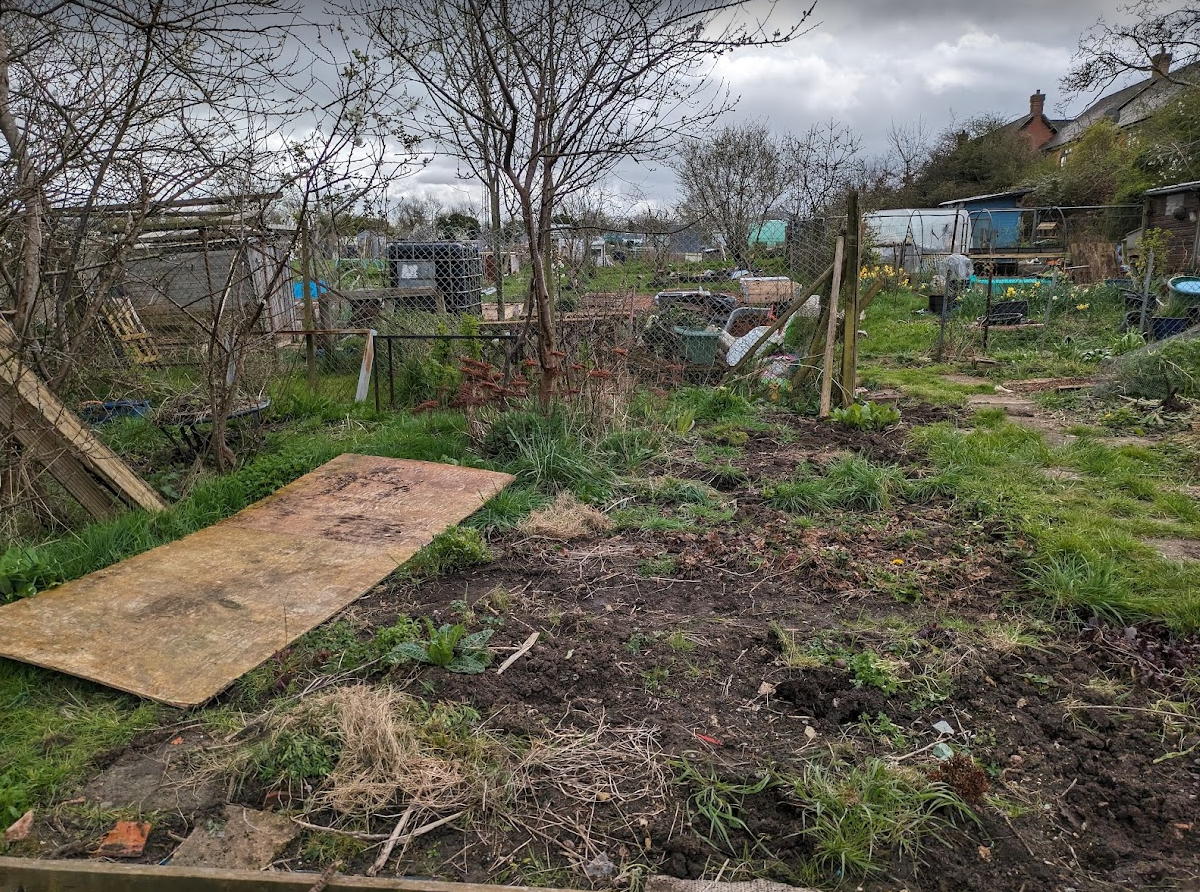

Step 3: Construct the Base
Start by laying down the largest logs and branches at the base of your chosen location.
Arrange them in a loose pile, ensuring there are gaps for air circulation and water infiltration.
The size of the logs will determine the bed’s longevity; larger logs decompose more slowly, providing nutrients for years.
As you can see, we needed to cut down some of the branches to fit the bed and we placed them in our trench with a covering of woodchip.
Step 4: Add Layers of Organic Matter
On top of the log base, add layers of smaller branches, twigs, and organic matter.
Alternate between green (nitrogen-rich) and brown (carbon-rich) materials to create a balanced composting environment.
This layering mimics a compost pile, enhancing decomposition and nutrient release.
Slowly we built up the layers as we added branches, grass shavings, woodchip etc…
During construction, we paid attention to filling the gaps between the wood core to prevent too much topsoil being lost later when we will be incorporating new plantings and as the mound settles.
Step 5: Cover with Topsoil
Once you have built up layers of organic matter to the desired height (usually 3-6 feet), cover the entire mound with a thick layer of topsoil. This topsoil layer provides the growing medium for your plants and protects the underlying materials from drying out too quickly.
After the Hügel had settled, Ruth packed in more grass shavings.
After a week, Keith and Cas went back to finish it off with the final layer of topsoil, taking the earth we had originally dug up to complete the mound.
Step 6: Water and Plant
Thoroughly water the Hügelkultur bed to kickstart the decomposition process and settle the materials. Now, you can plant your desired crops.
Hügel beds are ideal for vegetables, herbs, and flowers. The decomposition process generates heat, which can extend the growing season and improve plant growth.
This is the stage we still need to get pics of… Ruth did some planting in the Hügel a few weeks after we left her with it so we’re looking forward to seeing how everything grows in it over the coming months and years.
Ruth did report back a few months later to say that the plants shot up at rainy times but needed much more manual watering during dry and warm weather. Her assessment so far is that Hugel works best in cooler climates so we’ll wait to hear what our mild, wet summer brings!

The main benefits of Hügelkultur include:
Water Retention: The decomposing wood acts like a sponge, retaining water and reducing the need for frequent watering.
Nutrient-Rich Soil: As the wood decomposes, it releases nutrients that promote healthy plant growth.
Waste Reduction: Utilising woody debris and organic matter reduces garden waste and recycles natural materials.
Biodiversity: Hügelkultur beds attract beneficial insects, fungi, and micro-organisms, creating a healthy garden ecosystem.
Hügelkultur beds require minimal maintenance. Over time, the woody materials will decompose, enriching the soil with organic matter and nutrients.
You may need to add additional mulch or compost on top of the bed as it settles and decomposes but it’s well worth the effort for all the benefits you get from it. For more on planting and tending to them see The Druids Garden: Ultimate Guide to Hügelkultur Beds.


